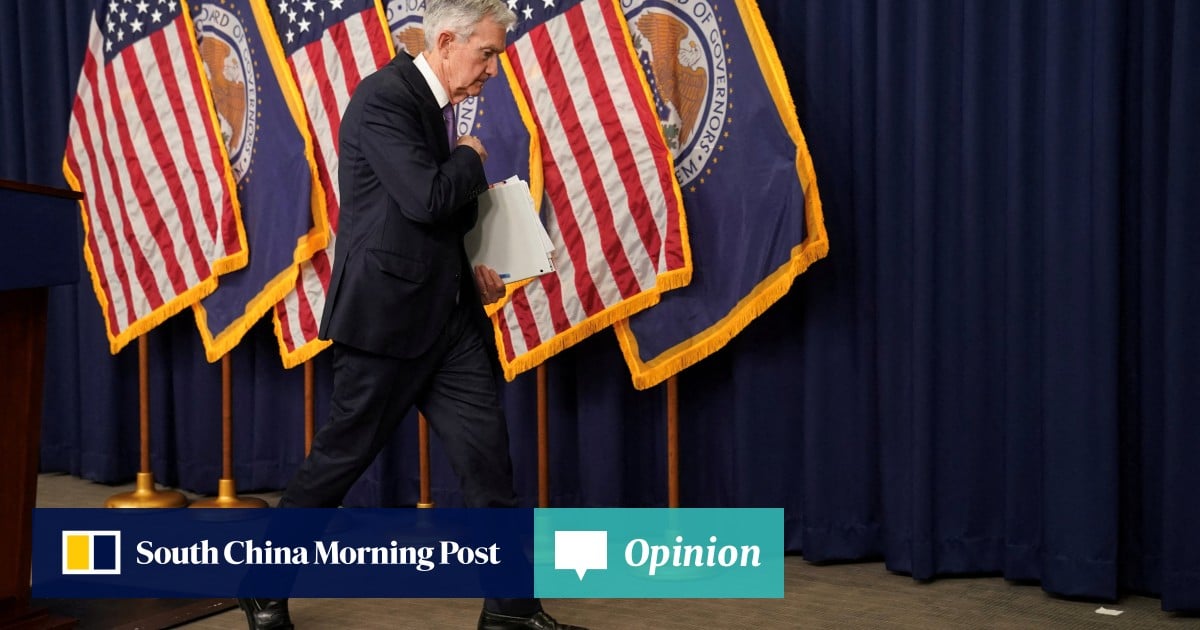
18 Jan Opinion | Why a mistake by the Fed will make it harder for Asia to cut rates
Yet, since the start of this year, doubts have crept in about the Fed’s ability and willingness to loosen policy significantly. The uncertainty stems from deeper concerns about a costly policy mistake, either due to a premature easing of policy or a belated one. In the Bank of America survey, 24 per cent of respondents believed the biggest “tail risk” in markets was a hard landing while 21 per cent said the main threat was higher-than-expected inflation.
Blunders committed by two previous central bankers loom large in the minds of many investors. By far the most egregious policy mistake was the failure of Arthur Burns, the chairman of the Fed for most of the 1970s, to keep rates high enough for long enough. This allowed inflation to slip out of control, forcing his successor, Paul Volcker, to raise rates much more aggressively at the cost of inducing a severe recession.

Another colossal error of judgment was the decision by Jean-Claude Trichet, the former president of the European Central Bank, to raise rates in 2008 and 2011 – just before the collapse of Lehman Brothers almost brought down the global financial system, and later on when the euro-zone debt crisis was escalating – despite severe economic and financial strains in the euro zone.
While today’s economic and financial challenges are very different, the dilemmas facing the world’s leading central banks are quite similar.
Fed chairman Jerome Powell does not want to go down in history as another Burns. Although headline and core inflation rates in the US have fallen steeply, services prices remain sticky while wage growth is outpacing inflation.
On the other hand, given that monetary policy operates with a lag, there are potentially significant costs in waiting too long to cut rates, especially in view of mounting signs that tight policy is taking its toll on America’s economy.
Furthermore, time is not on the Fed’s side. Even though borrowing costs have been on hold since July, real, or inflation-adjusted, rates have become increasingly restrictive as inflation has fallen, rising to their highest level since 2007. Just standing firm increases the risk of a recession.
Economists made wrong call on 2023 recession. But their alarm is real
Economists made wrong call on 2023 recession. But their alarm is real
This makes the challenges confronting Asia’s central banks more acute. As JPMorgan noted in a report published last month, developing economies in Asia have historically “been closely aligned with the Fed’s [rate-]cutting cycles, particularly at the turning points”.
However, unlike many emerging markets in Europe and Latin America, those in Asia (with the exception of China) have so far refrained from cutting rates. While the Fed’s dovish pivot should help smooth the way for reductions in borrowing costs across the region, the risk of a policy error by the Fed adds to the sense of caution among Asia’s central banks.
Excessive caution, however, could prove costly. While real rates in the US stood at nearly 3 per cent at the end of last year, they were even higher in some Asian economies due to lower inflation rates and, in some cases, higher borrowing costs.

Barring any further geopolitical or financial shocks, the case for rate cuts in Asia will grow stronger as the year unfolds. In four economies – South Korea, Malaysia, Indonesia and the Philippines – growth this year will be weaker than pre-pandemic levels while core inflation will be below central banks’ targets, data from JPMorgan shows. Simply put, Asia requires looser policy.
The good news is that the Fed’s hold over Asia is not as strong as it once was, partly due to more credible central banks and deeper capital markets. The risk, however, is that a major policy blunder by the world’s most powerful central bank could wreak havoc on the global economy.
Powell does not want to be the next Burns. Nor does he want to commit a Trichet-type mistake of exacerbating an economic slowdown. This is the year several Asian central banks are expected to join the global rate-cutting party. One can only hope the Fed does not spoil the fun.
Nicholas Spiro is a partner at Lauressa Advisory

